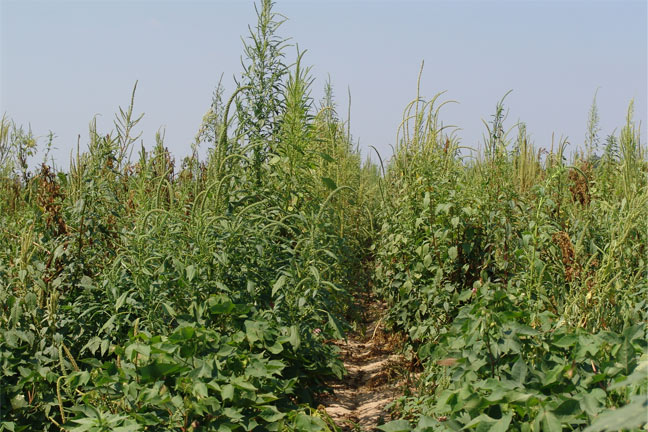
Agricultural News
Know Your Enemy: The Importance of Weed Identification
Tue, 15 Apr 2014 10:47:39 CDT

A recent BASF survey found that 76 percent of growers have made changes to their weed management programs to address weed resistance. With this growing problem spreading across the United States, it is important to take a comprehensive approach to fighting resistance and controlling weeds. Proper weed identification is fundamental to any effective weed control program.
"The first step in weed control is to know your enemy," said Kevin Bradley, Ph.D., Associate Professor of plant sciences at the University of Missouri. "If you don't know what you're going after, you're probably going to be behind from the very beginning."
Scouting should be done early in the season, when weeds are easier to control. Later in the season, those weeds continue to grow and produce seed, further contributing to weed seed banks.
Often, the same weed species will show up in a field year after year, so it is important to know where problem weeds live.
"It's about characterizing which part of your farm needs certain attention," said Greg Armel, Technical Market Manager, BASF. "There's an adage - every year you don't control weeds, there will be seven more years of fighting that weed. The less you know about what you're dealing with, the more that weed has a chance to get a foothold in your ground and prevent you from controlling it in an effective manner."
Newly acquired land, or any major land management changes, requires special attention when scouting and identifying weeds.
"Anything new you might have done to a field, like spread manure or taken ground out of pasture, makes it more critical to know exactly which species are present so you can make the right herbicide selection and get a good program established," said Bradley.
Palmer amaranth vs. waterhemp
While waterhemp has been an established problem for growers, it's more aggressive "cousin," Palmer amaranth, has been making its way into growers' fields. These two weeds can be easily confused. Here are a few tips for identifying Palmer amaranth:
• Look for long cotyledons - the first two leaves. Palmer amaranth has the longest cotyledons compared to any other pigweed or waterhemp species.
• Palmer amaranth leaves will be shorter and more rounded compared to waterhemp leaves, which are oar-shaped and glossy.
• Palmer amaranth has larger brachts than waterhemp. Brachts are the modified leaves associated with the inflorescence of plants. The brachts on female Palmer amaranth plants have a spine-like appearance.
• The petioles - stem-like structures that anchor leaves - are much larger on Palmer amaranth than other pigweed and waterhemp species. Often the petiole is as long or longer than the leaf.
Foxtail species
Though giant foxtail is the most common foxtail affecting crops in the United States, pockets of green and yellow foxtail have made appearances as well. It is very important to identify which foxtail species you are up against. Yellow foxtail is not easily controlled by certain ALS-inhibiting herbicides, and green foxtail is not easily controlled by certain HPPD-inhibiting herbicide. Giant foxtail is generally the easiest species to control.
• All foxtail species have a fringe of hair at the ligule, a helpful identifier when comparing to similar grasses.
• Giant foxtail has small hairs all over its leaf surface.
• Green foxtail has no hairs on its leaf structure, other than the ligule.
• Yellow foxtail has half-inch long hairs just above the ligule and is smooth over the rest of the leaf surface.
Weed identification is essential to proper weed control. Remember to scout your fields early and often throughout the season.
For more quick tips on weed control, visit AdvancedWeedControl.basf.us.
WebReadyTM Powered by WireReady® NSI
Top Agricultural News
More Headlines...



















